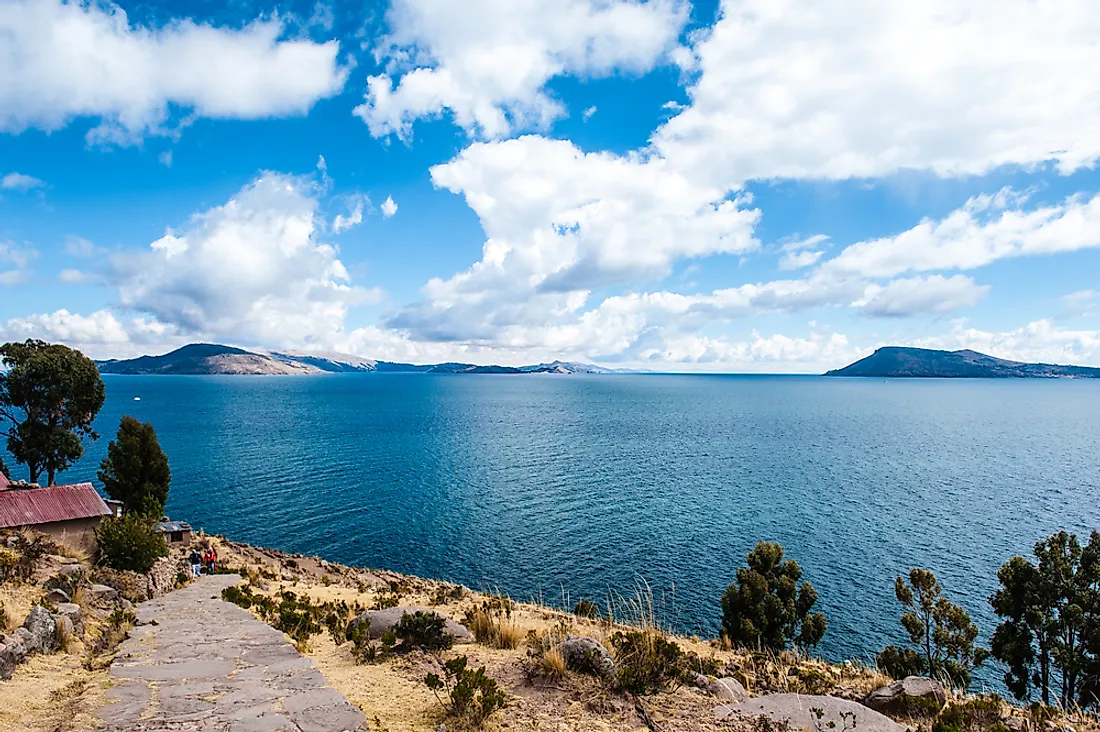The Largest Lakes in South America

There are eight lakes in South America most of which are located on the Andes or foothills. The continent’s complex topography has lead to the accumulation of water in closed basins forming reservoirs. Permanent Andean lakes in the continent are Lake Titicaca, Lake Sarococha, Lake Junín, and Lake Poopó. Piedmont lakes are Lakes Buenos Aires and Nahuel Huapi. Other lakes are Dos Patos Lagoon in Brazil and Maracaibo in Venezuela.
The Five Largest Lakes in South America
Lake Titicaca
Lake Titicaca is the largest lake in South America by surface area and volume. It covers an area of 3,232 sq mi and holds an average of 214 cu mi of water. It is the world’s "highest navigable lake” at an altitude of 12,507 ft. Titicaca is located within the boundaries of two countries; the western part lies in Puno Region of Peru while the eastern part is located in the Bolivian La Paz Department. The lake consists of two basins connected by the Strait of Tiquina. Five major rivers and more than 20 streams feed Titicaca; the Río Desaguadero is the only outlet. There are 41 islands on the lake most of which are inhabited.
Mar Chiquita
Mar Chiquita is an endorheic salt lake in central Argentina. It is the second largest lake in the continent with a surface area of between 770 and 2,320 sq mi. The size if the lake increases threefold during the rainy season because of its shallow depth of 35 ft. It is the largest saline lake in Argentina and South America. It primary inlets are the Dulce River which is a saline river and the Saladillo River. The level of salinity in the lake ranges from 250 g/l during low water to 40 g/l during floods.
General Carrera Lake/ Lake Buenos Aires
General Carrera is a lake shared by Chile and Argentina. It is referred to as Lake Buenos Aires in Argentina. The lake covers an area of 710 sq mi and has a depth of 1,923 ft. It is the third largest on the continent and the largest in Chile. The lake is located within the Andes mountain range. The lakes inlets are streams from melting glacier while the Baker River and the Deseado River are it primary outflows.
Lago Argentino
Lago Argentino is a lake in Los Glaciares National Park, Argentina. It is the largest freshwater lake in the country and the fourth largest lake on the continent. The lake covers an area of 546 sq mi with an average depth of 1,640 ft. The primary inflows are La Leona River and several streams of melting glaciers. The Santa Cruz River is its primary outflow.
Viedma Lake
Viedma is a lake located on the boundary between Argentina and Chile. It is an elongated lake with a length of 50 miles and a surface area of 420 sq mi. The lake’s inlets are the melting glacial ice of the Viedma Glacier while the Santa Cruz River is its main outflow.
Threats to the Lakes of South America
The lakes of the continent depend on the glaciers for water. The Andes provides a significant amount of the water. Since the late 1990s, the size of the lakes and the volume of the water have been shrinking as glacials that provided water has completely melted away or shrank significantly. Global warming has contributed to the accelerated melting of the glaciers.
The Largest Lakes in South America
| Rank | Lake | Location | Size (square km) |
|---|---|---|---|
| 1 | Titicaca | Bolivia, Peru | 8,372 |
| 2 | Mar Chiquita | Argentina | 6,000 |
| 3 | General Carrera Lake/ Lake Buenos Aires | Argentina, Chile | 1,850 |
| 4 | Argentino Lake | Argentina | 1,415 |
| 5 | Viedma Lake | Argentina, Chile | 1,088 |











